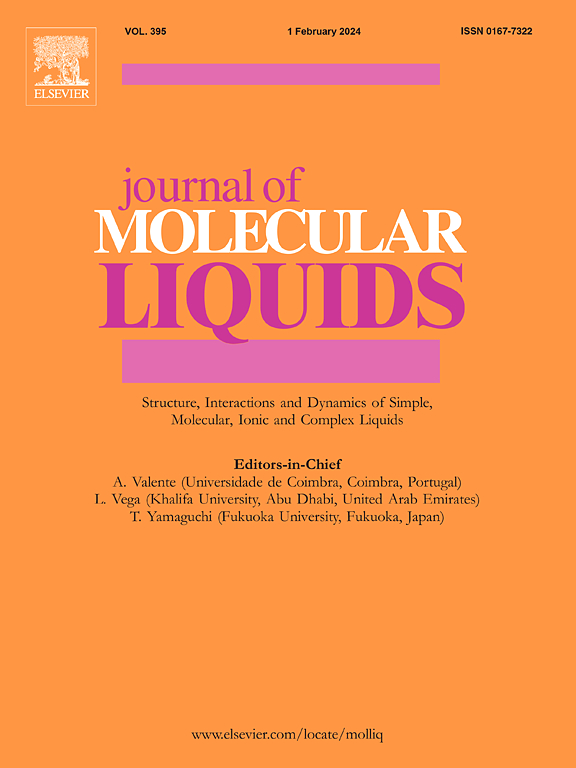Electrodeposition of Ni–W alloy corrosion-resistant coating from choline chloride-urea: Experimental Investigations and DFT calculations
IF 5.3
2区 化学
Q2 CHEMISTRY, PHYSICAL
引用次数: 0
Abstract
NiW alloy is a potential and economical corrosion-resistant material, however, hydrogen evolution and its negative effects are still not satisfactory when co-electrodeposition in an aqueous electrolyte. The purpose of this work was to create a uniform NiW coating by electroplating with a non-toxic solution of choline chloride-Urea eutectic (1ChCl:2Urea). Based on theoretical calculations and experimental results, it has been demonstrated that the 1ChCl:2Urea electrolyte exhibits a higher binding energy and stability, which limits the evolution of hydrogen on the electrode surface. A 3.5% NaCl solution was used to investigate the corrosion resistance of NiW alloys by Tafel polarization and electrochemical impedance spectroscopy. As a result of the improved uniformity of the coating prepared by the ionic liquid electrolyte, the NiW alloy coating exhibits excellent corrosion resistance. The results are beneficial to improve the NiW alloy co-deposition process to prepare a high-performance NiW alloy coating. By extending the application scope of green solvents to corrosion-resistant coatings, this study offers a green solution to the issue.

求助全文
约1分钟内获得全文
求助全文
来源期刊

Journal of Molecular Liquids
化学-物理:原子、分子和化学物理
CiteScore
10.30
自引率
16.70%
发文量
2597
审稿时长
78 days
期刊介绍:
The journal includes papers in the following areas:
– Simple organic liquids and mixtures
– Ionic liquids
– Surfactant solutions (including micelles and vesicles) and liquid interfaces
– Colloidal solutions and nanoparticles
– Thermotropic and lyotropic liquid crystals
– Ferrofluids
– Water, aqueous solutions and other hydrogen-bonded liquids
– Lubricants, polymer solutions and melts
– Molten metals and salts
– Phase transitions and critical phenomena in liquids and confined fluids
– Self assembly in complex liquids.– Biomolecules in solution
The emphasis is on the molecular (or microscopic) understanding of particular liquids or liquid systems, especially concerning structure, dynamics and intermolecular forces. The experimental techniques used may include:
– Conventional spectroscopy (mid-IR and far-IR, Raman, NMR, etc.)
– Non-linear optics and time resolved spectroscopy (psec, fsec, asec, ISRS, etc.)
– Light scattering (Rayleigh, Brillouin, PCS, etc.)
– Dielectric relaxation
– X-ray and neutron scattering and diffraction.
Experimental studies, computer simulations (MD or MC) and analytical theory will be considered for publication; papers just reporting experimental results that do not contribute to the understanding of the fundamentals of molecular and ionic liquids will not be accepted. Only papers of a non-routine nature and advancing the field will be considered for publication.
 求助内容:
求助内容: 应助结果提醒方式:
应助结果提醒方式:


